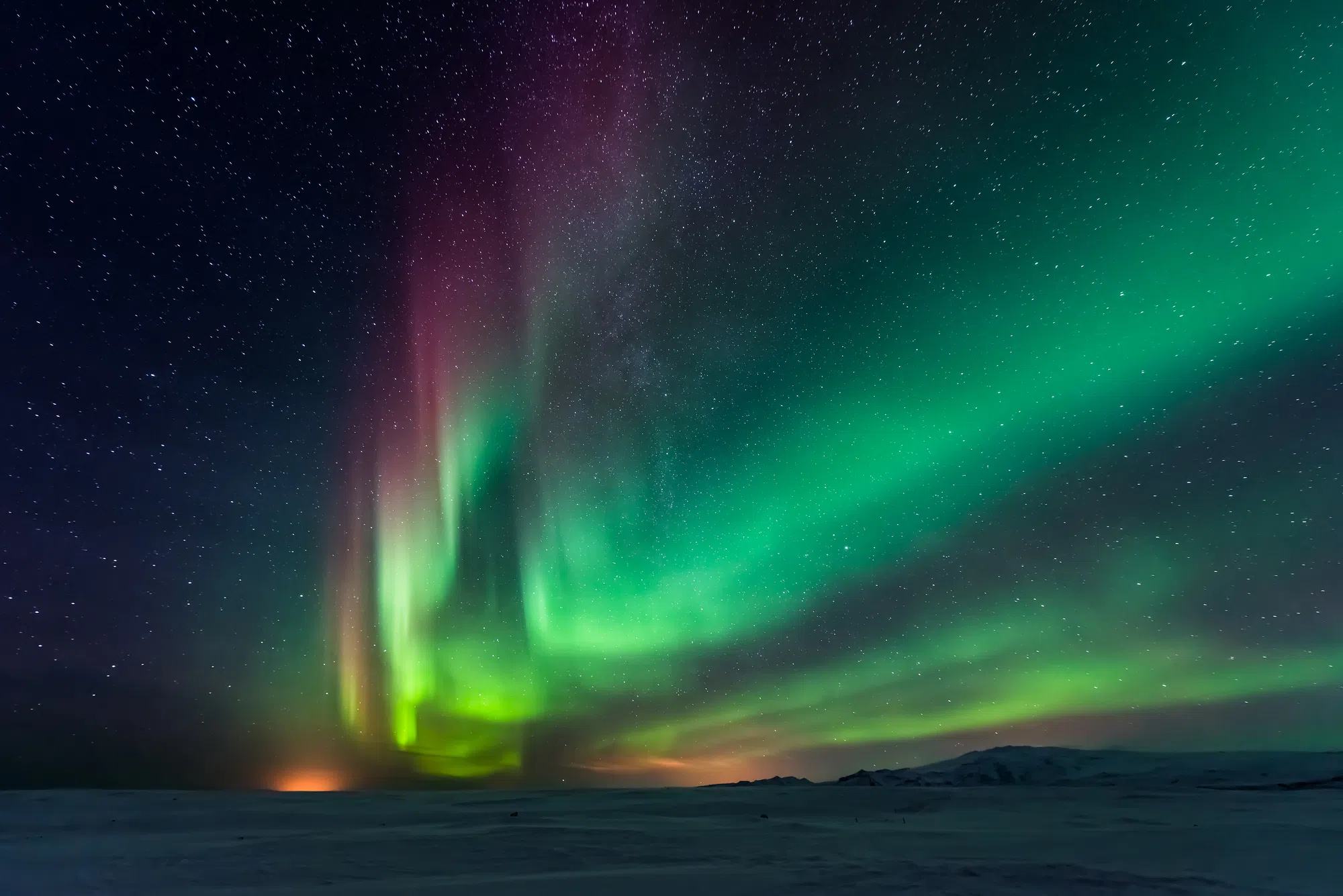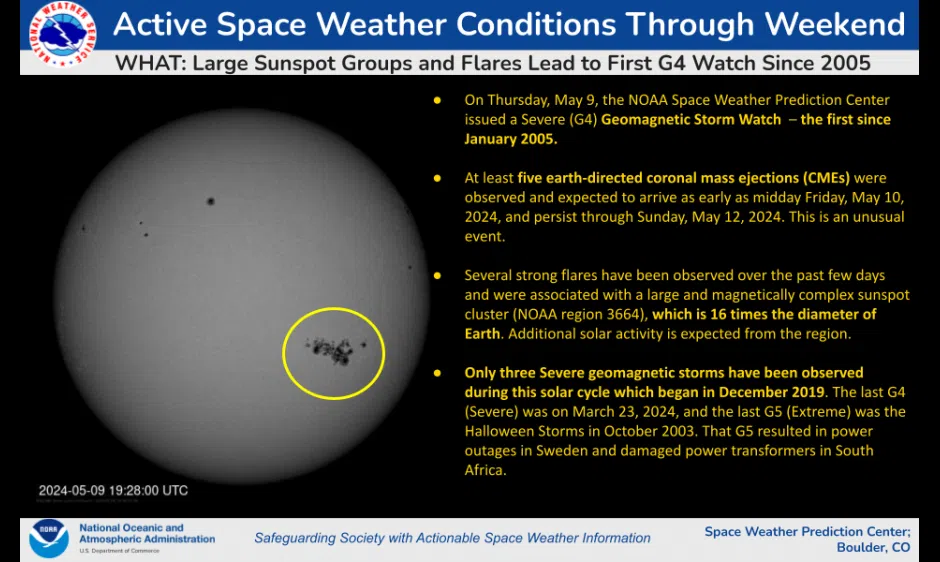
surangastock / Depositphotos.com
KEARNEY — Active space weather will contribute to aurora possibility being visible on the horizon in Nebraska throughout the weekend.
On Thursday, May 9 the National Oceanic and Atmospheric Administration (NOAA) Space Weather Prediction Center issued a Severe (G4) Geomagnetic Storm Watch, the first since January 2005.
At least five Earth directed coronal mass ejections were observed from the Sun and expected to arrive as early as midday Friday, May 10 and persist through Sunday, May 12.
“This is an unusual event,” NOAA Space Weather Prediction Center noted.
Several strong flares have been observed over the past few days and were associated with a large magnetically complex sunspot cluster, which is 16 times the diameter of Earth. Additional solar activity is expected from this region, NOAA Space Weather Prediction Center stated.
Only three severe geomagnetic storms have been observed during this solar cycle which began in December 2019.
The last G4, severe, was observed on March 23, 2024. The last G5, extreme, was the Halloween space storms of October 2003, this resulted in power outages in Sweden and damaged power transformers in South Africa.
It’s not a guarantee that the aurora will be visible, as the timing of the potential storms is not exactly known. If it occurs during the daytime, the chances will be greatly limited until the evening hours.
“Coronal Mass Ejections, (CMEs) are explosions of plasma and magnetic fields from the sun’s corona. They cause geomagnetic storms when they are directed at Earth. Geomagnetic storms can impact infrastructure in near-Earth orbit and on Earth’s surface, potentially disrupting communications, the electric power grid, navigation, radio and satellite operations,” NOAA Space Weather Prediction Center stated.
“Geomagnetic storms can also trigger spectacular displays of aurora on Earth. A severe geomagnetic storm includes the potential for aurora to be seen as far south as Alabama and Northern California,” NOAA Space Weather Prediction Center noted.

